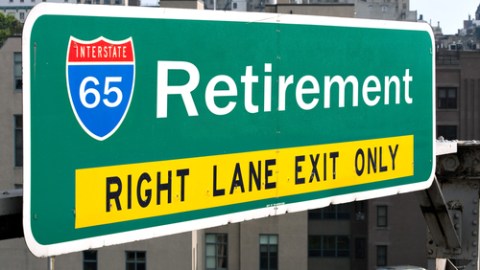Five Retirement Investments that Pay for a Lifetime

Ah retirement…you know the vision – vistas of long beaches, fairways, sunsets with umbrella drinks. Baloney. This imagery worked as an ideal for those who thought they might retire early and move to this future perfect oasis. New realities require us to rethink retirement. Yes, the economic downturn has recalibrated much of the public’s expectations; most people now expect to work longer. But something else has changed as well – few people as they approach retirement age (if anyone knows what that magical birthday really is) can imagine nearly two-plus decades or more of relative inactivity as a way to wrap up an otherwise productive, engaged…let alone a meaningful life.
Many financial services firms are now introducing a new narrative of retirement one that includes the need for disciplined savings and smart spending in older age. But, there is far more to older age than financial security that requires investments of a different type – investments that have implications on finances for sure, but pay far higher dividends in quality living than an income stream alone can provide. Here are five investments to make today:
Invest in health & well-being: Over 110 million Americans suffer from at least one chronic disease. Nearly 60 million suffer from two or more. The cost of health can be quantified. A frequently cited Fidelity Investments study suggests that couple 65 years old and older can anticipate spending an average of about $230,000 beyond the expenses covered by insurance, government benefits, etc. If you want to live well (and with less expense) in retirement, eating smart, exercising as well as regularly checking in with your physician before something is ‘wrong’ is an investment that will save money, reduce family anguish and may actually make a longer work-life possible.For more on “numbers that may make you sick” see the Wall Street Journal’s Retirement Roundtable.
Invest in personal competitive advantage: Individuals must be as dynamic as the economy. Most people say they will be working at least part-time in their ‘retirement years’. Investing in new skills, for some new degrees, and expanding your professional network is no longer advice for 20 and 30-somethings still finding their way in the workplace. Today everyone, at every age, must make the business case as to why they are where they are and what they can bring to new employers or to whatever might be their ‘what’s next’ career.
Invest in connectivity & engagement: Most people worry about disease, disability and running out of money in old age. All real and reasonable concerns – but there is another silent threat to quality aging – lost connectivity and engagement. Nearly 30% of people over 65 live alone in the United States. Transportation is rarely discussed as part of retirement, but mobility, typically driving, is the glue that holds all the big and little things we call life together at any age. Before you do anything, you have to get there first. More than 70% of Americans over age 50 live in suburban or rural areas where alternatives to the car are few or non-existent. Investing in mobility options and planning alternatives to remain connected and engaged with and without the car is the difference between living well and living under house arrest.
Invest in friends & family – Social networks are not just for kids anymore. Many people, especially men, are likely to have their social networks built around their jobs – it takes extra effort, but developing an active and expanding group of friends in older age is an investment that pays dividends for a life-time. A vibrant network of friends and family can keep you healthy, active, engaged, and when necessary, cared for. Marriage, for example, appears to have medicinal benefits for older men…the jury is still out as to its benefits for older women.
Invest in housing to stay – The majority of people choose to age-in-place, that is by the time they are 50 years old their mortgages, marriages and memories are in the house they hope to stay in for the rest of their lives. To make that stay possible, middle age adults investing in home remodeling today should actively consider making changes to eliminate physical barriers to staying home tomorrow, e.g., doorways that can accommodate a wheelchair or walker, a kitchen that is stylish but one that can provide a place to sit to rest sore knees or hips, a bathroom that can offer a restful soak and not a track and field challenge to keep from falling, etc. Investing in adapting a home to support aging-in-place today can ease future burdens on a family should disability occur and reduce the cost of having to move to a care facility. For more information on making your home age-ready see The Hartford’s Advance 50 Team’s guides to support safe and independent living.
Retirement road sign image from Shutterstock





